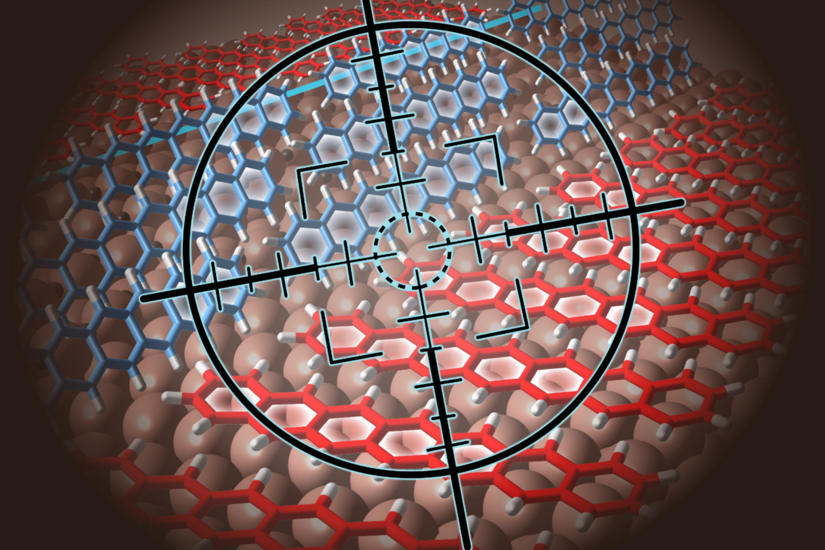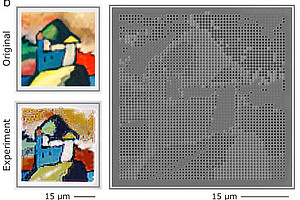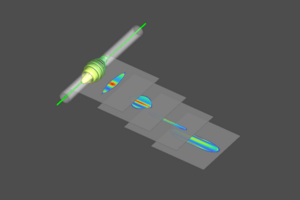The Surface Science Team at the University of Graz, led by Professors Sterrer and Koller (Experimental Physics), in collaboration with the Puschnig Research Group (Theory), investigates the interfaces of ultrathin layers of organic semiconductors with surfaces. In cooperation with the University of Tübingen (Bettinger Group and Chassé Group), a peculiar molecule-oxide-metal system has been in the focus of a recently published work. In this study, it has been demonstrated that the electronic properties of the interface could not only be characterized in great detail but also modified in a controlled way.
Significant contributions to the findings were made by the NanoESCA momentum microscope of the NAWI Graz Core Facility "Photoemission Electron Microscopy of Nanomaterials", an innovative and advanced method for examining the electronic structure of nanomaterials. In this experimental technique, electrons are ejected from the system by ultra-violet light pulses and the intensity of the emitted photoelectrons is measured as a function of energy and emission angle. A comparison of experimental data with simulations provides insights not only into the energy states of electrons at the interface but also allows for deep insights into the structure of the molecular orbitals from which the electron get ejected.
The studied molecule, heptacene, belongs to the chemical group of acenes and is a new relative of pentacene, a well-known organic semiconductor. When heptacene comes into contact with a copper surface, electrons are transferred from the metal substrate to the molecule. Treatment with oxygen passivates the surface, thereby completely suppressing the charge transfer to the adsorbed heptacene molecules. Instead, the interaction between the molecules intensifies. This pronounced change in the electronic structure illustrates the strong effect of surface passivation on the behavior of organic molecules on metal surfaces. By controlling the amount of oxygen during passivation, approximately 2-4 nanometer-wide strips of alternating pure and passivated copper can be created. These stripes act as templates to orient the molecules and determine their respective electronic properties. By producing such a stripe phase, the researchers succeeded in creating and controlling periodic nanostructures of heptacene with and without charge transfer in close proximity on the same surface. These results not only deepen our understanding of molecular adsorption but also demonstrate how molecular films with tailored electronic properties can be fabricated using such a "bottom-up" approach.
The research was conducted as part of the FWF project "Photoemission Tomography of Excited Molecular States" I4145-N36.
“Orientation, electronic decoupling and band dispersion of heptacene on modified and nanopatterned copper surfaces”
Thomas Boné, Andreas Windischbacher, Lukas Scheucher, Francesco Presel, Paul Schnabl, Marie S Wagner, Holger F Bettinger, Heiko Peisert, Thomas Chassé, Peter Puschnig, Michael G Ramsey, Martin Sterrer, Georg Koller
Journal of Physics: Condensed Matter, 2023 Aug 31;35(47). doi: 10.1088/1361-648X/acf105.
Authors:
Thomas Boné and Andreas Windischbacher




